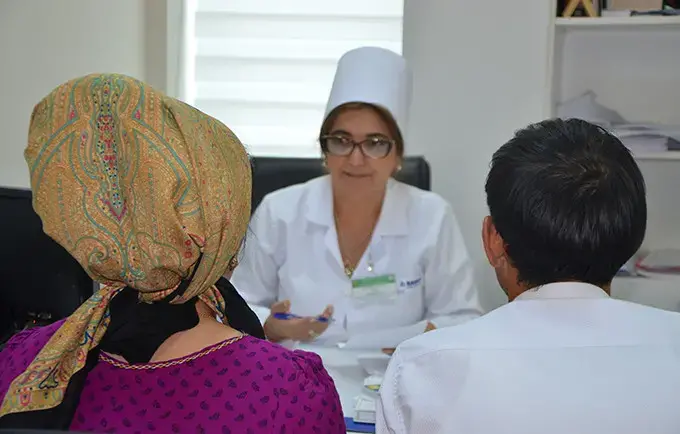Cervical cancer is the second most common cause of cancer death among women in Eastern Europe and Central Asia, where it is associated with enormous personal distress, social disruption, and financial costs for women, their families, and health systems. Every year, there are more than 38,000 new cases and 18,000 deaths from cervical cancer in the region, representing rates up to 10 times higher than in Western Europe.
The primary reason for the higher number of new cases and deaths in Eastern Europe and Central Asia is a lack of the high-quality cervical screening programmes that are common in Western European countries such as Finland, which now has one of the lowest cervical cancer rates in the world.
A key reason to prioritise cervical cancer prevention is because it primarily affects younger women, with the majority of cases occurring between 35 and 45 years of age. This is a time when most women are working, caring for their families, or doing both, so the social impact of cervical cancer is greatly increased because it removes mothers from their families and workers from the economy.
Another key reason is because almost every case could be prevented. Well-organised screening programmes can reduce cervical cancer rates by up to 80 per cent or by up to 90 per cent if combined with HPV vaccination of adolescent girls. Furthermore, because cervical screening works by finding and removing precancerous lesions to prevent the cancers occurring in the first place, cervical screening reduces both new cases and deaths from cervical cancer.
Cervical cancer can be caused by any one of about 15 carcinogenic (or ‘high-risk’) types of the human papillomavirus (HPV), a very common sexually transmitted virus. Though almost 90 per cent of HPV infections are cleared naturally by the immune system, persistent infections can increase the risk of cervical cancer by leading to the development of precancerous lesions that can progress to cervical cancer over a period of about 10 years. These precancerous lesions can be diagnosed and removed using simple and effective outpatient procedures, but since they do not cause any clinical symptoms, they can only be identified by cervical screening.
UNFPA supports cervical cancer prevention efforts in Eastern Europe and Central Asia by working with partners to:
- Support regional and national advocacy efforts to develop evidence-based policies for cervical cancer prevention;
- Assess and improve the institutional capacities of countries in the region to plan, develop, and operate organised screening programmes that adhere to international standards and best practices;
- Provide technical expertise in all areas of cervical cancer prevention, including supporting the development of necessary tools and mechanisms;
- Support regional partnership initiatives and promote south-south cooperation initiatives such as the Black Sea Countries Coalition for Breast and Cervical Cancer Prevention; and
- Build professional alliances and technical networks with leading international institutions, including the European Cervical Cancer Association and the International Federation of Cervical Pathology and Colposcopy.
Learn more about our work on preventing cervical cancer:





